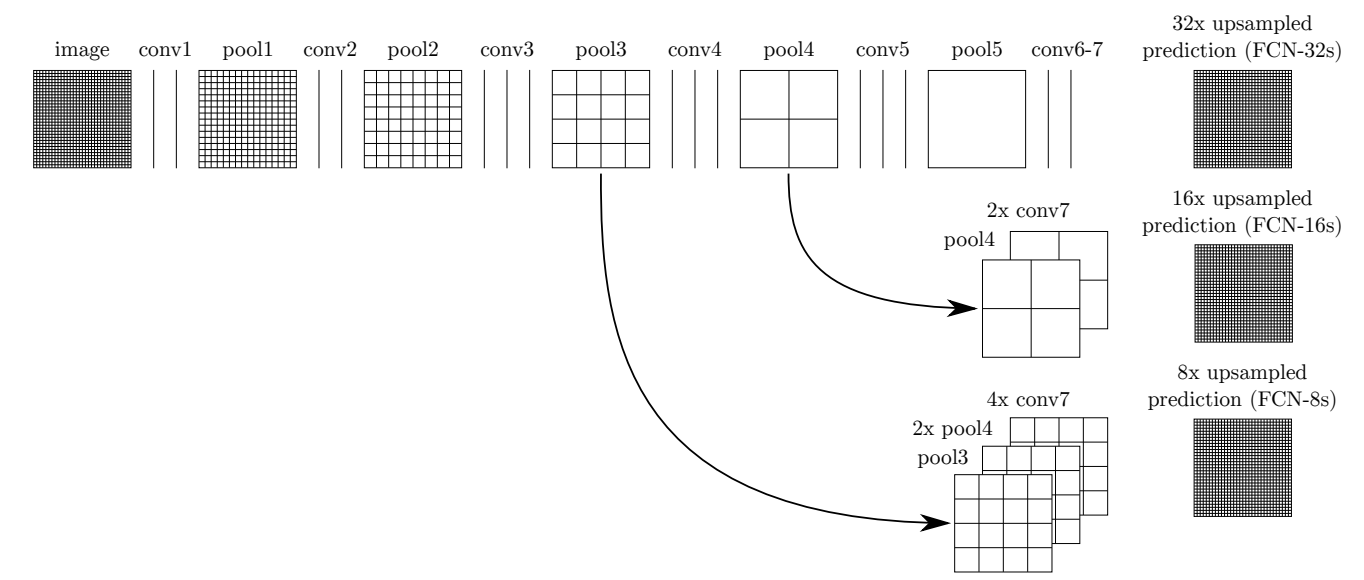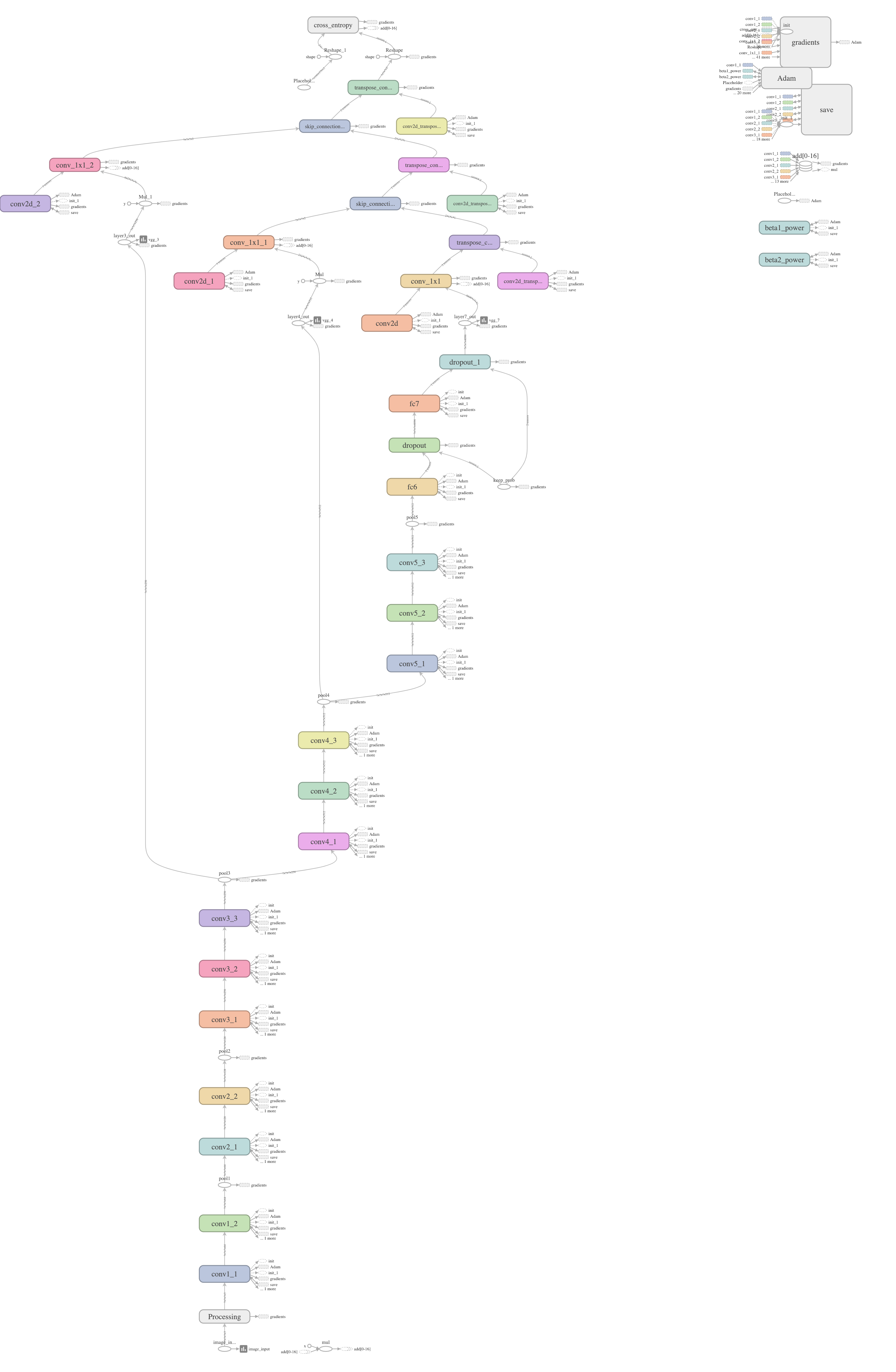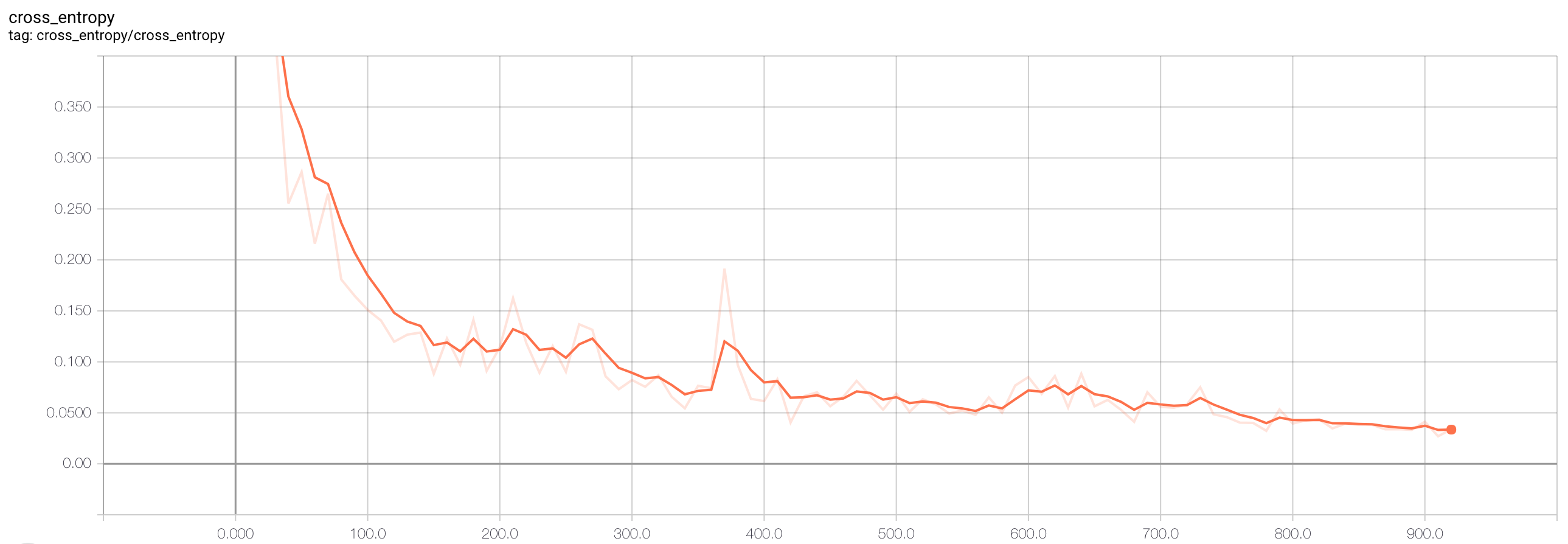In this project, you'll label the pixels of a road in images using a Fully Convolutional Network (FCN). This project is based on the work of Fully Convolutional Networks for Semantic Segmentation. In the reference, there are three main techniques implemented:
- 1x1 convolution
- Upsampling with transpose convolution operation
- Skip connection
 The visualization of the skip connection in Tensorboard
The visualization of the skip connection in Tensorboard

| Hyperparameter | value |
|---|---|
| learning rate | 0.001 |
| keep prob | 0.7 |
| l2 regularization | 0.002 |
Cross-entropy loss while training

The following images are from the test set
main.py will check to make sure you are using GPU - if you don't have a GPU on your system, you can use AWS or another cloud computing platform.
Make sure you have the following is installed:
You may also need Python Image Library (PIL) for SciPy's imresize function.
Download the Kitti Road dataset from here. Extract the dataset in the data folder. This will create the folder data_road with all the training a test images.
Implement the code in the main.py module indicated by the "TODO" comments.
The comments indicated with "OPTIONAL" tag are not required to complete.
Run the following command to run the project:
python main.py
Note: If running this in Jupyter Notebook system messages, such as those regarding test status, may appear in the terminal rather than the notebook.
Here are examples of a sufficient vs. insufficient output from a trained network:
| Sufficient Result | Insufficient Result |
|---|---|
 |
 |
- Ensure you've passed all the unit tests.
- Ensure you pass all points on the rubric.
- Submit the following in a zip file.
helper.pymain.pyproject_tests.py- Newest inference images from
runsfolder (all images from the most recent run)
- The link for the frozen
VGG16model is hardcoded intohelper.py. The model can be found here. - The model is not vanilla
VGG16, but a fully convolutional version, which already contains the 1x1 convolutions to replace the fully connected layers. Please see this post for more information. A summary of additional points, follow. - The original FCN-8s was trained in stages. The authors later uploaded a version that was trained all at once to their GitHub repo. The version in the GitHub repo has one important difference: The outputs of pooling layers 3 and 4 are scaled before they are fed into the 1x1 convolutions. As a result, some students have found that the model learns much better with the scaling layers included. The model may not converge substantially faster, but may reach a higher IoU and accuracy.
- When adding l2-regularization, setting a regularizer in the arguments of the
tf.layersis not enough. Regularization loss terms must be manually added to your loss function. otherwise regularization is not implemented.
In main.py, you'll notice that layers 3, 4 and 7 of VGG16 are utilized in creating skip layers for a fully convolutional network. The reasons for this are contained in the paper Fully Convolutional Networks for Semantic Segmentation.
In section 4.3, and further under header "Skip Architectures for Segmentation" and Figure 3, they note these provided for 8x, 16x and 32x upsampling, respectively. Using each of these in their FCN-8s was the most effective architecture they found.
Within main.py, there are a few optional sections you can also choose to implement, but are not required for the project.
- Train and perform inference on the Cityscapes Dataset. Note that the
project_tests.pyis not currently set up to also unit test for this alternate dataset, andhelper.pywill also need alterations, along with changingnum_classesandinput_shapeinmain.py. Cityscapes is a much more extensive dataset, with segmentation of 30 different classes (compared to road vs. not road on KITTI) on either 5,000 finely annotated images or 20,000 coarsely annotated images. - Add image augmentation. You can use some of the augmentation techniques you may have used on Traffic Sign Classification or Behavioral Cloning, or look into additional methods for more robust training!
- Apply the trained model to a video. This project only involves performing inference on a set of test images, but you can also try to utilize it on a full video.
If you are unfamiliar with GitHub , Udacity has a brief GitHub tutorial to get you started. Udacity also provides a more detailed free course on git and GitHub.
To learn about REAMDE files and Markdown, Udacity provides a free course on READMEs, as well.
GitHub also provides a tutorial about creating Markdown files.




